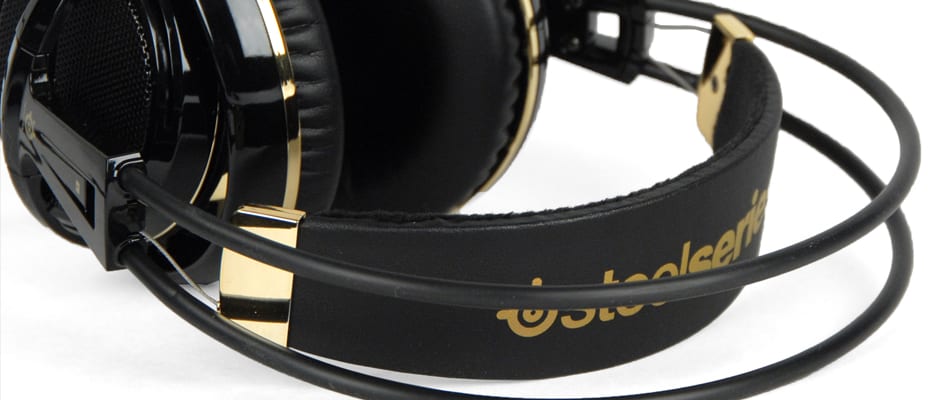Introduction
Product Overview
{{section_header}}{{section.name}}{{/section_header}}
Meet the Siberia V2.
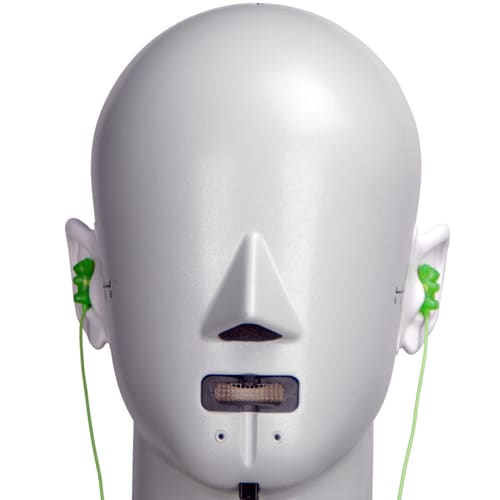
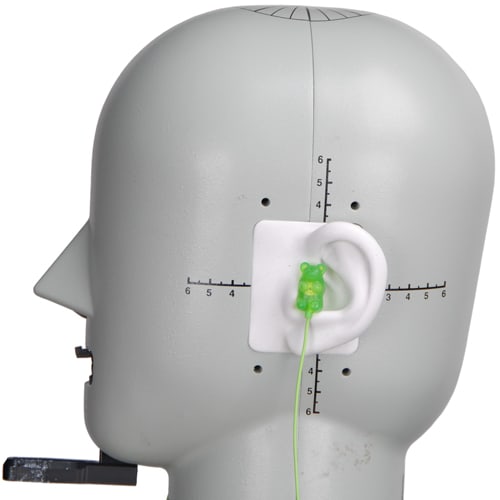
Speakers
{{section_header}}{{section.name}}{{/section_header}}
Protected by a thin mesh is the speaker element, pictured here. The ear pads are made of a leather-like (if not actually leather) material that is very soft to the touch.
Back
{{section_header}}{{section.name}}{{/section_header}}
The backs of the {{product.name}}s are shown here, with their metal mesh, and where the band meets the ear cup.
Band
{{section_header}}{{section.name}}{{/section_header}}
For those of you who don't like to futz with band settings, the {{product.name}}s have a design that should come as a welcome surprise, as it uses a cable assembly to automatically adjust to the user's head. We've seen this before on more expensive headphones.
Cable
{{section_header}}{{section.name}}{{/section_header}}
Protruding from the left ear cup is the cable, 9.8 feet long, and splitting into dual 3.5mm cables.
Each of the cables that split from the main cable after the remote ends in a 3.5mm plug, one for the microphone, the other for the headphone element.
Despite the fact that there are very few cable guards on the {{product.name}} itself, what is there is fairly robust rubber. You shouldn't have any issues with solder points shattering, but we still advise you not to tug on your cables.
Additional Features
{{section_header}}{{section.name}}{{/section_header}}
Stored inside the left ear cup is the retractable microphone, which can articulate to the user's preference. Should you stop using your mic, you an always guide it back into the headset.
In the Box
{{section_header}}{{section.name}}{{/section_header}}
Your {{product.name}}'s packaging will include your headset, and maybe some documentation. That's it.
Durability
{{section_header}}{{section.name}}{{/section_header}}
While these cans don't seem to have many features related to durability, the break-away cables are actually a good thing, allowing you to replace them should they snap for whatever reason. Still, there are a few weak points that can cause you grief later, so please treat your headset with care.
Aesthetics
{{section_header}}{{section.name}}{{/section_header}}
Because there are many versions and different colors of the {{product.name}}s, you can choose what you'd like most, including a variant of the white color with a blue glow when you plug them in. The unit we were able to review is the limited edition black and gold model, which in all honesty looks fairly slick.
Frequency Response
{{section_header}}{{section.name}}{{/section_header}}
The frequency response of the {{product.name}}s is fairly indicative of what a common response looks like with gaming headsets, complete with a de-emphasis in the 5-7kHz range, which is where many sounds of small arms fire live. While this is a great thing for first-person shooter games, it may not be ideal for RPG games with a heavy focus on music, but rest easy: we've seen far more dramatic de-emphasis on this range in other headsets, and the {{product.name}}s seem to do a good job of maintaining a relatively even response outside of the aforementioned blemish.
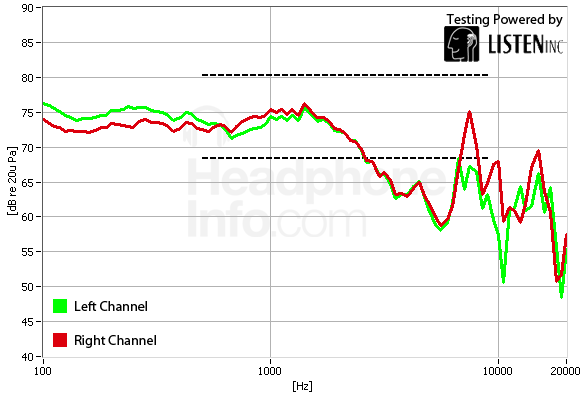
Click here for more information on our frequency response test.
Distortion
{{section_header}}{{section.name}}{{/section_header}}
There isn't much of a distortion problem with the {{product.name}}s.
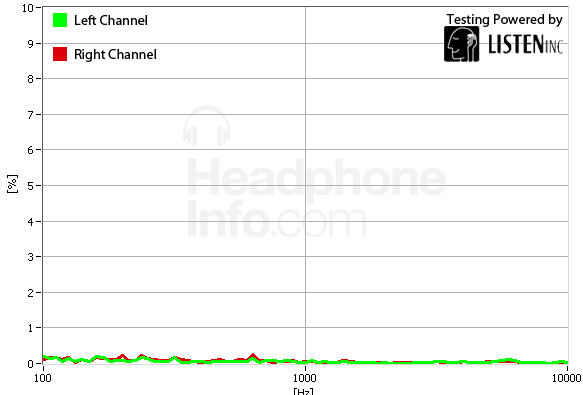
Click here for more information on our frequency response test.
Tracking
{{section_header}}{{section.name}}{{/section_header}}
Outside of a slightly noticeable channel shift in the higher frequencies, the {{product.name}}s don't have any immediately audible tracking errors. It isn't perfect, but that's okay when the error is under 2dB in any channel.
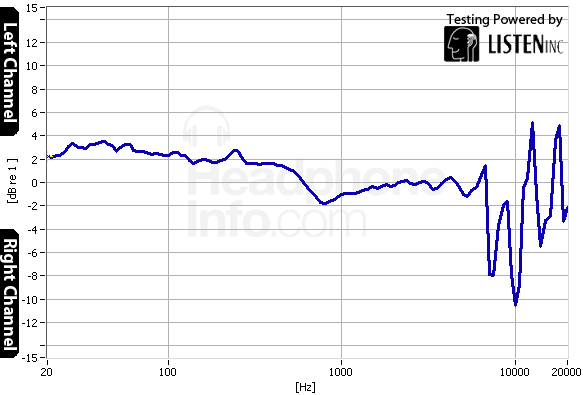
Click here for more information on our frequency response test.
Isolation
{{section_header}}{{section.name}}{{/section_header}}
If you're looking for a headset to block out a lot of noise around you, the {{product.name}}s are probably not the set for you. While they do manage to block out a bit of the higher end of sound, they don't seem to impede the mid and low ranges at all. Still, gamers in their natural habitat don't have much noise going on in the background in many instances, so this may not be much of a concern for you.
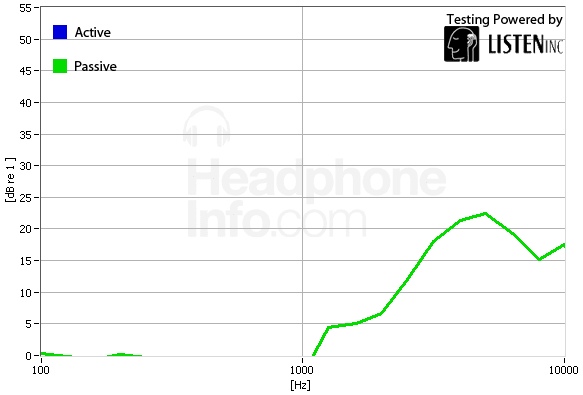
Click here for more information on our isolation test.
Leakage
{{section_header}}{{section.name}}{{/section_header}}
{{product.name}}s also leak sound like a sieve, which may or may not matter to you depending on your gaming environment. It's something to be wary of, as you will annoy those around you if the room is quiet enough.
Click here for more information on our leakage test.
Maximum Usable Volume
{{section_header}}{{section.name}}{{/section_header}}
Pushed to their limit, the {{product.name}}s can output sound up to 109.05dB without hitting the dreaded 3% total harmonic distortion (THD) level that is annoying to most users. Still, we always take the time to warn you not to crank the volume that loud to begin with, as you could permanently damage your hearing if left at that volume for too long.
Click here for more on our maximum usable volume test
Short-Term Use
{{section_header}}{{section.name}}{{/section_header}}
Placing the {{product.name}}s on our head for the first time, you'll notice that the band conforms to your head with a light touch, which is always a positive, but be careful not to move around too violently, as it can sometimes move a little bit. Depending on your head size, the {{product.name}}s are widely seen as very comfortable headphones.

Extended Use
{{section_header}}{{section.name}}{{/section_header}}
Over time, the fit doesn't change, and the {{product.name}}s net the same score here.
Customizability
{{section_header}}{{section.name}}{{/section_header}}
Aside from extending or stowing your microphone, there really isn't much you can do to your {{product.name}}s once you've bought them and removed them from the package. This isn't inherently a bad thing, however, just something to note.
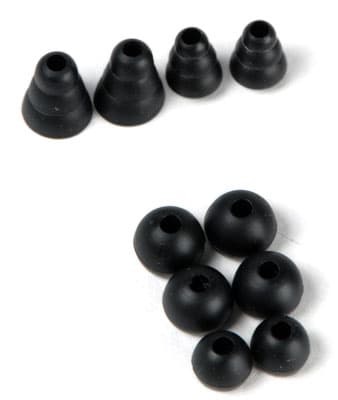
Cable Connectivity
{{section_header}}{{section.name}}{{/section_header}}
With a 9.8 foot long cable that branches into two after the remote, the {{product.name}}s can seem a bit cumbersome at times, but ultimately are best suited for PC gaming over many headsets, outside of the ones that use only a USB connection. There are no adapters included in the packaging, but the {{product.name}}s don't really need one.
Portability
{{section_header}}{{section.name}}{{/section_header}}
With a long cable, no carrying case, and a rather large unit, the {{product.name}}s are not very portable at all. Still, unless you're packing for a LAN party, this shouldn't be a huge issue. Very few headsets come with a carrying case or easy way to transport.
Maintenance
{{section_header}}{{section.name}}{{/section_header}}
Aside from being able to wipe the bio matter off of the mesh guarding the speaker element, there really isn't much you can do to maintain your cans. However, should you break one of your cables that connects your headset to your computer, take solace in the fact that they are simple 3.5mm male to 3.5mm male connections, which you can replace easily.
Other Features
{{section_header}}{{section.name}}{{/section_header}}
Remote & Mic
The microphone of the {{product.name}}s is actually really cool: not only can it be expanded or stowed, but it is ensconced in metal, and can be articulated to meet your mouth. While playing games on the SILK client (used by Steam), Ventrilo, and Skype, no issues were reported in terms of audio quality or pickup.
Volume Control
The remote of the {{product.name}}s has a rubbery volume knob and a switch to turn your microphone on and off at your convenience. It works well, especially if the game you are playing is unexpectedly loud or quiet.
Design
{{section_header}}{{section.name}}{{/section_header}}
While both units are PC gaming headsets with similar hookups and connectivity, the {{product.name}}s have a microphone boom that can be articulated or stowed, and the Razers can only swivel their mic around. Aside from this, the {{product.name}}s are slightly more durable, but both headsets are very similar by design.
Frequency Response
{{section_header}}{{section.name}}{{/section_header}}
It looks like there's somewhat of a consensus on what a PC gaming headset should look like, as each frequency response is fairly similar, outside of the {{product.name}}s downplaying 5-7kHz sounds.
Distortion
{{section_header}}{{section.name}}{{/section_header}}
Neither headset had any issue with distortion worth mentioning.
Tracking
{{section_header}}{{section.name}}{{/section_header}}
Neither headset was perfect in terms of their tracking response, but the Razers managed to stay below a 2dB channel shift along the entire range of measured frequencies.
Isolation
{{section_header}}{{section.name}}{{/section_header}}
While neither set of cans is a good isolator by design, the {{product.name}} attenuates more sound than does the Razer headset.
Comfort
{{section_header}}{{section.name}}{{/section_header}}
You really can't go wrong with either, but we advise our readers to try headsets on for themselves, as comfort relies heavily upon what someone's head is shaped like, and that varies considerably from person to person. That being said, the no-fuss band of the {{product.name}}s is very convenient and comfortable.
Verdict
{{section_header}}{{section.name}}{{/section_header}}
This one really comes down to comfort and user preference, really, but we should point out that each headset is relatively similarly-priced. The {{product.name}}s offer a more durable set of cans with comparable performance, but the Razers edge them out when it comes to playing games that are not first-person shooters. If you're an RPG buff, you may want to grab the Razers, but the {{product.name}}s stack up very well too.
Design
{{section_header}}{{section.name}}{{/section_header}}
The Astro A40s are far more expensive, and are additionally chock full of features and capabilities that are not present on the {{product.name}}s. Not only is the Astro A40 able to be used on just about everything under the sun with a 3.5mm headphone/microphone jack, but it can also be used on just about any console, tablet, or smartphone. With the extra money you'd pay on the A40s, you definitely get a return.
Frequency Response
{{section_header}}{{section.name}}{{/section_header}}
Unless you really like bass in your games, the {{product.name}}s actually have the superior frequency response here, as they don't underemphasize as many frequencies as do the A40s, nor do they overemphasize the bass frequencies as much.
Distortion
{{section_header}}{{section.name}}{{/section_header}}
Neither headset has much of an issue with distortion worth mentioning.
Tracking
{{section_header}}{{section.name}}{{/section_header}}
The Astro A40s hands-down have a better tracking response than do the {{product.name}}s, as they have fewer audible shifts in channel preference.
Isolation
{{section_header}}{{section.name}}{{/section_header}}
The Astro A40s block out slightly less ambient noise than do the {{product.name}}s, but the difference is not monumental, nor is it really noticeable to the human ear.
Comfort
{{section_header}}{{section.name}}{{/section_header}}
Both of these headphones are very comfortable, but to know with absolute certainty which one will be better for you, you have to try them on for yourself! Comfort levels vary from person to person, so see if you can give each a go if you're on the fence.
Verdict
{{section_header}}{{section.name}}{{/section_header}}
The Astro A40s offer compatibility that far exceeds that of the {{product.name}}s, and they have better tracking as well. On the other hand, they also cost a heck of a lot more. If you think that the added ability to function with an XBox or PS3 is worth it to you, the Astro A40s are a great pickup, but if you're only interested in using a headset with PC gaming, you could also save yourself a bundle by picking up the {{product.name}}s. It's your call.
Design
{{section_header}}{{section.name}}{{/section_header}}
The {{product.name}}s have the more robust design, with a better band, metal casing for the microphone boom, and more durable cables, but here's the rub: the Tritton headset can be used with XBox or PS3 consoles, while the {{product.name}}s can't without special adapters.
Frequency Response
{{section_header}}{{section.name}}{{/section_header}}
While it may not be as much of a difference to first-person shooter fans, the high end of the Tritton AX 180s suffers badly, making them a poor choice for RPGs. The {{product.name}}s, on the other hand, have a far better frequency response.
Distortion
{{section_header}}{{section.name}}{{/section_header}}
Neither set of cans has an appreciable level of distortion.
Tracking
{{section_header}}{{section.name}}{{/section_header}}
Neither headset has a perfect tracking response, but you'll hear (but just barely) more slight errors with the {{product.name}}s.
Isolation
{{section_header}}{{section.name}}{{/section_header}}
Neither set of cans are what we'd call "good isolators," but the Trittons technically block out more sound.
Comfort
{{section_header}}{{section.name}}{{/section_header}}
While the Trittons aren't really all that uncomfortable, the {{product.name}}s have a really well-made band that accommodates even the most finicky of users. Still, if you're given the opportunity, try these on for yourself, as heads vary in shape and size, and that can mean more for comfort level than the opinion of some random person on the internet.
Verdict
{{section_header}}{{section.name}}{{/section_header}}
While both are similar in price point, the {{product.name}}s offer a bit more in terms of durability for PC gamers. If you're looking for a console-based device, the AX 180s aren't a bad fit, but the {{product.name}}s offer more in raw performance that shouldn't be overlooked.
Conclusion
{{section_header}}{{section.name}}{{/section_header}}
If you're looking for a gaming headset for your PC that boasts a good microphone, decent sound, and won't break the bank, you'd be hard-pressed to do better for the price than a set of {{product.name}}s. They're not perfect, but they get the job done without frustrating hangups and connectivity issues.
There is the slight tracking problem, but you probably won't notice it all that much, but keep in mind that this is an entry-level gaming headset; it's not going to light the world on fire, but its flaws are few. That being said, the frequency response may not deaden the sound of gunfire as much as some may like, but that also means that they're balanced enough to work for other games where that sort of de-emphasis is not ideal.
Taking into account the sound performance, comfort, durability and price, the {{product.name}}s make a strong argument for your cash if you're in the market for an entry-level gaming headset for a PC. If you're not looking for a headset to work with a console, these are a solid pickup for the price.
Meet the tester
A seasoned writer and professional photographer, Chris reviews cameras, headphones, smartphones, laptops, and lenses. Educated in Political Science and Linguistics, Chris can often be found building a robot army, snowboarding, or getting ink.
Checking our work.
Our team is here to help you buy the best stuff and love what you own. Our writers, editors, and experts obsess over the products we cover to make sure you're confident and satisfied. Have a different opinion about something we recommend? Email us and we'll compare notes.
Shoot us an email